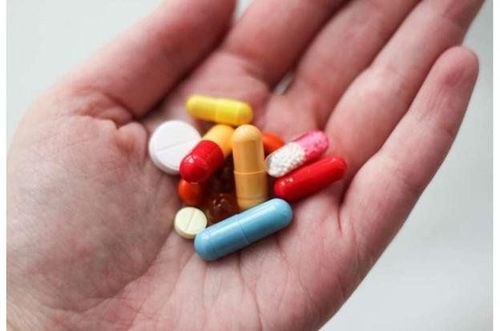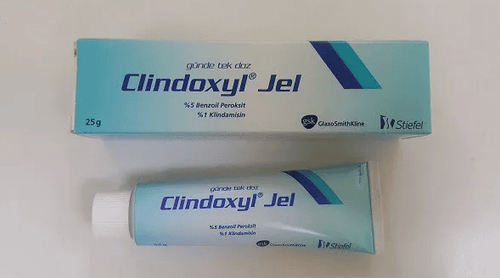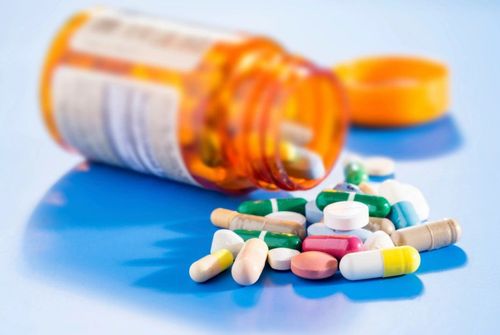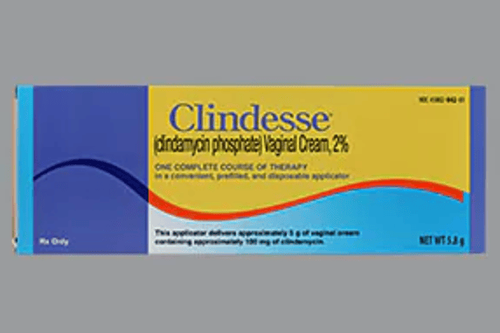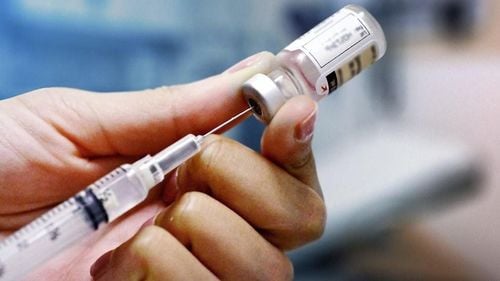This is an automatically translated article.
Fabaclinc drug with the main ingredient is Clindamycin, belongs to the group of drugs to treat parasites, anti-infectives, antivirals, antifungals. So what is Fabaclin and what is the dose? Find out more information about Fabaclinc in the article below.
1. What is Fabaclinc?
Fabaclinc is a prescription drug that has anti-infective effects and treats diseases caused by bacteria with the ingredient Clindamycin. Fabaclinc drug is prepared in the form of capsules, packing specifications are 10 tablets 1 blister, each box 2 blisters. Fabaclinc drug is composed of the main drug, Clindamycin 150 mg, here is extracted in the form of Clindamycin hydrocrorid 150 mg, with the main use being to treat symptoms caused by bacterial infections.
2. What are the effects of Fabaclinc?
Fabaclinc drug is made from Clindamycin 150 mg and other excipients just enough for one tablet. Clindamycin is an antibiotic that inhibits bacterial protein synthesis. This active ingredient has a bacteriostatic or bactericidal effect depending on the concentration of the drug and the strain of bacteria.
Specific effects of Fabaclinc are listed as follows:
Treatment of symptoms of infections caused by anaerobic or gram-positive aerobic bacteria Treatment of infectious diseases such as respiratory infections, infections Intra-abdominal bacteria, post-operative wound infections, etc. Because it is an antibiotic, it can replace penicillin. Fabaclinc is indicated for use in the following patients:
Patients with pneumonia and lung abscesses, infections in the respiratory tract due to the invasion of anaerobic bacteria: Streptococcus, Staphylococcus, Pneumococcus,. Patients with intra-abdominal infections, including cases of peritonitis and abdominal abscesses Patients with bacteremia Patients with pelvic and female genital tract infections, which can include: peritonitis intrauterine, tubal abscess, or anaerobic bacterial infection due to post-operative vaginal dressings.
3. Usage of Fabaclinc
3.1. How to use Fabaclinc For the drug Fabaclinc, patients use it orally. Dosage of Fabaclinc depends on the severity of the infection and the type of disease the patient has. Duration of drug use can be prolonged based on the severity of the infection area, in particular, up to 6 weeks.
Take Fabaclinc by swallowing the tablet whole with a glass of liquid, such as cooled boiled water. The product should not be broken, crushed or chewed by the patient, as this may lead to a loss of Fabaclinc pharmacokinetics.
3.2. Dosage of Fabaclinc Drug Fabaclinc is indicated for use in adults and children.
Adults: The recommended dose is 150 - 300 mg, 4 times a day, or 450 mg, 4 times a day in case of severe infections. Children over 1 year old (or body weight over 10 kg): The recommended dose is 3-6 mg/kg body weight, every 6 hours. Children under 1 year old (or body weight less than 10 kg): The recommended dose is 37.5 mg/time, every 8 hours. Use as oral solution, 37.5 mg x 1 time / 8 hours. 3.3. Handling when forgetting, overdosing Missed dose: When forgetting a dose, the patient needs to take it as soon as possible. But when it's almost time to remember your next dose, continue taking Fabaclinc as directed by your doctor. Note that do not double the dose, avoid reactions caused by overdose.
Overdose: In case the patient overdosed on Fabaclinc, unwanted symptoms of the drug may appear. At this time, the patient needs to contact the medical facility to conduct gastric lavage and symptomatic treatment.
3.4. Contraindications Fabaclinc is contraindicated in patients who are allergic or hypersensitive to Clindamycin, Lincomycin or any of its ingredients. Pregnant women: Use Fabaclinc only when the benefits outweigh the risks. Clindamycin is contraindicated in nursing mothers because Clindamycin may pass into breast milk.
4. Notes when using Fabaclinc
Side effects of Fabaclinc
When using Fabaclinc, patients may experience unwanted side effects such as:
Pseudomembranous colitis in the elderly or people with impaired kidney function May cause nausea , acute diarrhea Rare symptoms such as allergic skin urticaria reactions, increased liver transaminases during the time of taking the drug. timely adjustments.
Fabaclinc drug interactions
Caution should be used with neurosensory blocking drugs in muscle tissue Clindamycin should not be used concurrently with the following drugs:
Oral steroid contraceptives. Fabaclinc is a direct antagonist of erythromycin, because the two drugs act at the same site at the bacterial ribosome, it is possible that binding of one to the bacterial ribosome reduces the effect of the other. Anti-motility agents such as Diphenoxylate, Loperamide, or Opiates. The reason is that these drugs slow the elimination of toxins, aggravate the symptoms of colitis caused by the use of Clindamycin. Fabaclinc drug storage
Avoid storing Fabaclinc in humid places, do not put the medicine out of the manufacturer's packaging when not in use The appropriate storage temperature for Fabaclinc 250 is below 30 degrees Celsius, avoid sunlight the sun shines directly on the product. Store the drug out of the reach of children & pets Fabaclinc is a prescription drug, so patients need to consult a doctor before use. Patients should carefully read the instructions for use before use and follow the instructions and doses prescribed by the doctor.
Follow Vinmec International General Hospital website to get more health, nutrition and beauty information to protect the health of yourself and your loved ones in your family.
Please dial HOTLINE for more information or register for an appointment HERE. Download MyVinmec app to make appointments faster and to manage your bookings easily.




